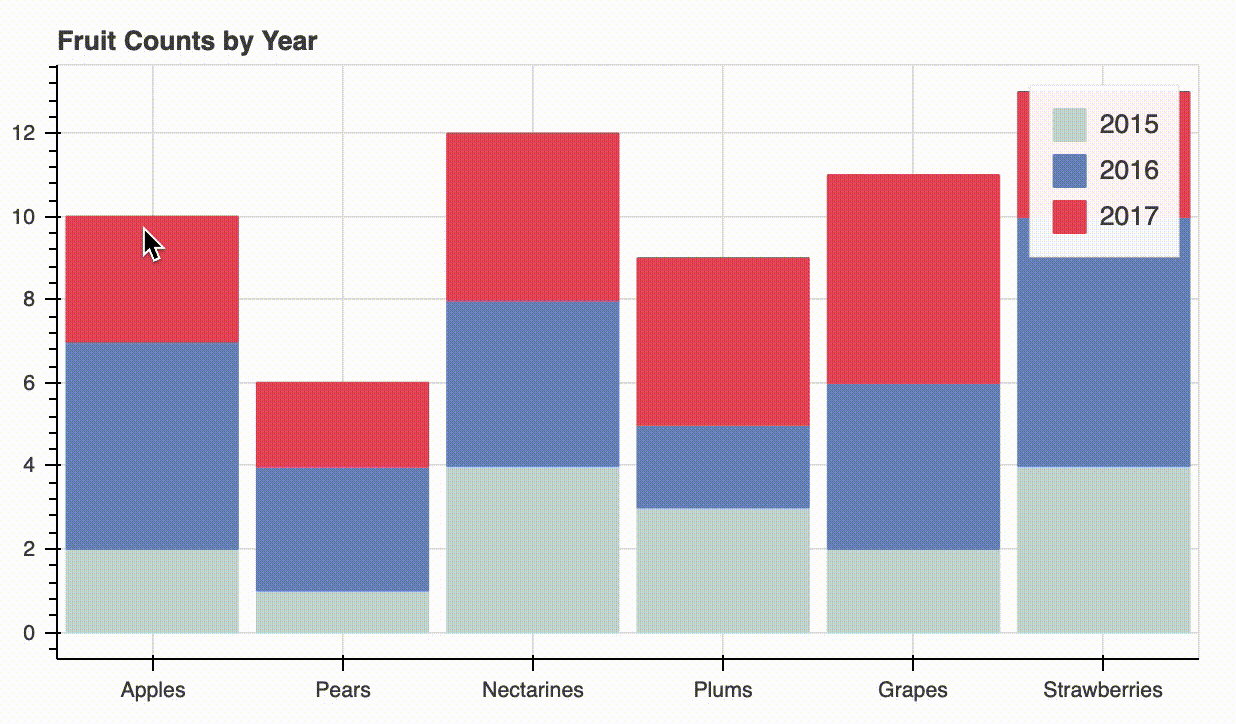Это реализация, предложенная bigreddot с использованием CustomJSHover (работает для Bokeh v1.3.0):
from bokeh.core.properties import value
from bokeh.models import ColumnDataSource, CustomJSHover
from bokeh.plotting import figure, show
fruits = ['Apples', 'Pears', 'Nectarines', 'Plums', 'Grapes', 'Strawberries']
years = ["2015", "2016", "2017"]
colors = ["#c9d9d3", "#718dbf", "#e84d60"]
data = {'fruits' : fruits,
'2015' : [2, 1, 4, 3, 2, 4],
'2016' : [5, 3, 4, 2, 4, 6],
'2017' : [3, 2, 4, 4, 5, 3]}
source = ColumnDataSource(data=data)
tooltips= [("name", "$name"), ("count", "@$name")]
p = figure(x_range=fruits, plot_height=350, title="Fruit Counts by Year",
toolbar_location=None, tooltips=tooltips)
renderers = p.vbar_stack(years, x='fruits', width=0.9, color=colors, source=source,
legend=[value(x) for x in years], name=years)
p.hover[0].tooltips.append(('info', '$name{custom}'))
p.hover[0].formatters = {'$name' : CustomJSHover(code = "return special_vars.name + '_text'")}
show(p)
Немного больше усилий вы можете достичь того же, используяCustomJS обратный вызов (Bokeh v1.3.0):
from bokeh.core.properties import value
from bokeh.models import ColumnDataSource, HoverTool, CustomJS
from bokeh.plotting import figure, show
fruits = ['Apples', 'Pears', 'Nectarines', 'Plums', 'Grapes', 'Strawberries']
years = ["2015", "2016", "2017"]
colors = ["#c9d9d3", "#718dbf", "#e84d60"]
data = {'fruits' : fruits,
'2015' : [2, 1, 4, 3, 2, 4],
'2016' : [5, 3, 4, 2, 4, 6],
'2017' : [3, 2, 4, 4, 5, 3]}
source = ColumnDataSource(data=data)
p = figure(x_range=fruits, plot_height=350, title="Fruit Counts by Year",
toolbar_location=None, tools="")
renderers = p.vbar_stack(years, x='fruits', width=0.9, color=colors, source=source,
legend=[value(x) for x in years], name=years)
hover_code = "if (cb_data.index.indices.length > 0) { cb_obj.tooltips[2] = ['info', cb_obj.name + '_text'] }"
for renderer in renderers:
p.add_tools (HoverTool(tooltips=[("name", "$name"),
("count", "@$name"),
("info", "@info"), ],
renderers=[renderer],
name = renderer.name,
callback = CustomJS(code = hover_code)))
show(p)
